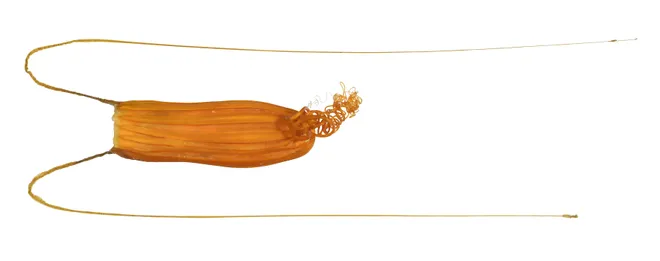Do sharks lay eggs? Here's how the fish gives birth and what some eggs look like.
Maybe you've seen a "mermaid's purse" while walking on the beach. Not actually an accessory for the mythical creature, these small casings are the eggs of sharks and their relatives
For around 455 million years, scientists believe sharks have been swimming the ocean's depths. Today, there are over 500 species.
Each has its own unique habitats, behaviors and characteristics. While some share similarities, others may be vastly different. This also holds true for how sharks reproduce.
Do sharks lay eggs?
Yes, and no. It depends on the species. Some sharks give birth by laying eggs, while others give birth to live young, Save Our Seas Foundation reports.
Sharks that give birth to live young are viviparous like humans. Viviparous sharks are either placental or aplacental, according to the Florida Museum of Natural History.
Placental sharks develop a placental connection to their babies, similar to a mammal's umbilical cord. This leaves some sharks with "belly buttons" after they are born. Aplacental sharks do not have a placenta and their embryos rely on a yolk-sac or unfertilized egg capsules for nutrition, the Florida Museum of Natural History reports.
Lemon sharks, bull sharks, mako sharks and blue sharks are among those that give birth to live young.
The remainder of sharks are oviparous, meaning they lay eggs. Oviparous sharks will lay eggs and leave them to develop and grow on their own. The eggs will hatch outside of a shark's body and the mother will not take care of her offspring, according to the Florida Museum of Natural History.
Approximately 40% of shark species lay eggs, according to the MarAlliance, a conservation non-profit. This includes wobbegongs, horn sharks and some cat sharks.
What is the biggest shark?Meet the ocean's largest fish and the top 10 biggest sharks
What do shark eggs look like?
Most shark eggs will look like a "mermaid's purse." The casings will have long tendrils in order to attach to seaweed or debris, according to the Shark Research Institute. This prevents the eggs from being washed away by currents, the UK Natural History Museum reports.
Other species, including the bullhead shark, will produce spiral-shaped eggs.

Just Curious for more? We've got you covered
USA TODAY is exploring the questions you and others ask every day. From "Do sharks have bones?" to "How long do orcas live?" to "What is the largest ocean?" − we're striving to find answers to the most common questions you ask every day. Head to our Just Curious section to see what else we can answer.
Disclaimer: The copyright of this article belongs to the original author. Reposting this article is solely for the purpose of information dissemination and does not constitute any investment advice. If there is any infringement, please contact us immediately. We will make corrections or deletions as necessary. Thank you.







